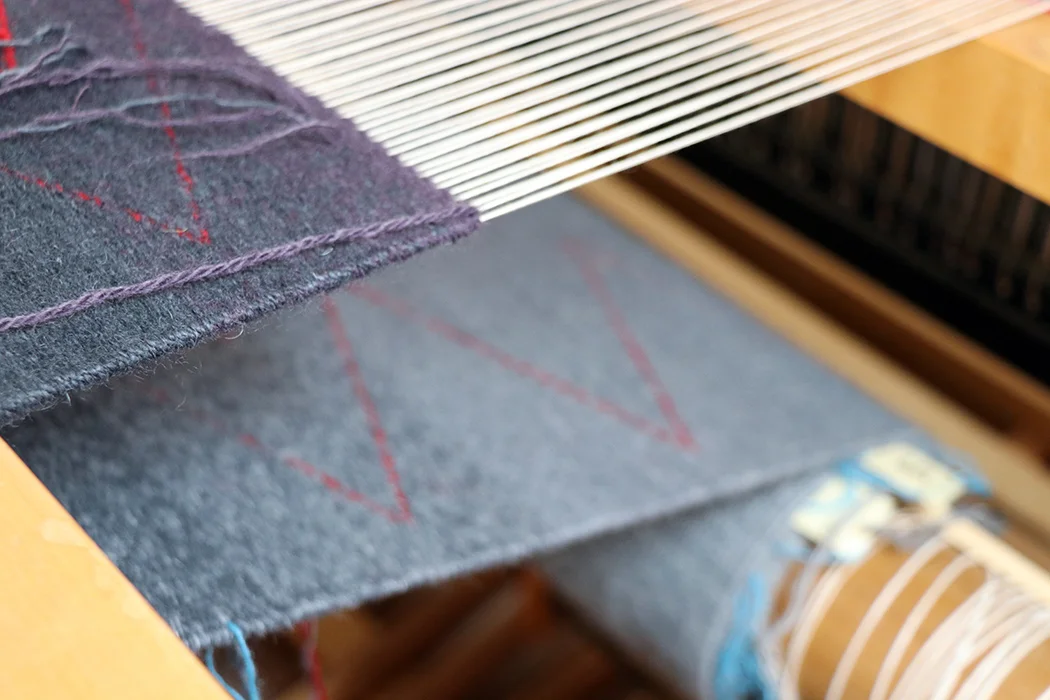My studio Fridays this year have been devoted to getting the yarn and design ready for a new large tapestry. I don’t have a name for it yet, but the inspiration came from my artist residency at Petrified Forest National Park way back in 2016. That experience made me think a lot about time. Petrified Forest does have a lot of petrified wood—trees that grew when Arizona was near the equator and fell in some great event 220 million years ago. The park is also full of amazing landforms that are stratified. As you walk through the landscape you’re walking through landscapes formed during entirely different time periods. The only way I know to travel through time in a single day.
During my month at that park, I did a daily 2 x 2 inch weaving every evening about my experiences in the park that day. I spent much of my time hiking, sketching, and taking photos. In my little casita after the early winter darkness fell, I had many hours to do some weaving. On day three of the residency, I wove a piece about the layers I saw everywhere.







